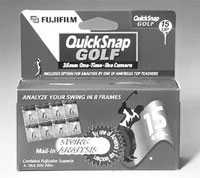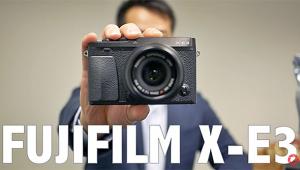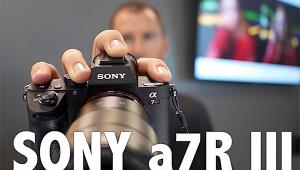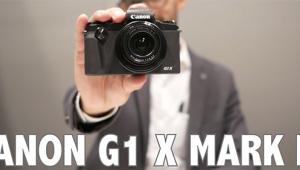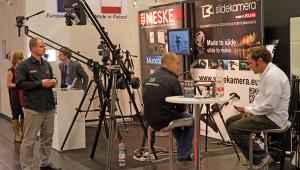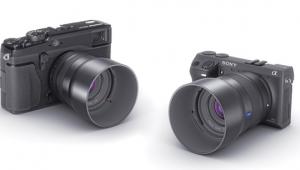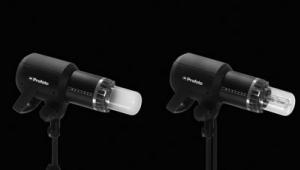New Photographic Films
Ferrania. The name Ferrania Imaging Technologies may not be familiar to everyone, but this company has been making store brand films for over 30 years now. Formerly part of Imation Corp. (and affiliated with 3M), this company is now solely owned by a private group in Ferrania, Italy. The new generation of their FG family of films includes enhanced emu-lsion stability, optimized spectral sensitivity, new DIR couplers, and a new silver halide crystal formation technique yielding faster speeds, finer grain, and sharper pictures. The end result is said to be brighter, more saturated colors with excellent image quality, sharpness, and wider exposure latitude. |
|
FG800 is the first ISO 800 speed film marketed by Ferrania; this product and FG400 should be available now. A spokesman told us that FG film looks less grainy when underexposed and that contrast, color saturation, and skin tones are superior to their previous series. Until September 2000, these products will continue to be sold under the Imation brand. As a bonus, the FG series is said to offer better results with marginal processing and environmental conditions. The sample prints exhibited at their booth seemed to confirm that this new series of films is indeed superior to their predecessor. |
|
Fujifilm. Because Fuji released its superb new Fujichrome Professional 100F (RDP III) slide film before the PMA show, it did not make any new film announcements. (Do check the March issue for my test report on this virtually grainless film.) Al-though we don't usually cover single-use cameras, one such product really caught my interest. The new Fujicolor QuickSnap GOLF quickly captures a player's golf swing on eight consecutive frames for easy-to-understand analysis. When golfers mail in the pictures made with this camera, they can receive an even more comprehensive swing analysis from a top instructor, Bill Forrest. Capable of generating 15 exposures, the GOLF provides eight mini-images per print to illustrate the motion of the golfer's stroke. |
|
Eastman Kodak. This year, it was Kodak's turn to show the most new films, and the samples we saw were impressive indeed. Of greatest interest were the enhanced "fast" films featuring Max technology: Kodak Max Zoom 800 and Advantix 400 (APS format). Both include the latest T-grain emulsion and chemical technology to deliver significant improvements in granularity, sharpness, and color consistency. These days, most pictures are taken using "slow" zoom lenses--including the compact cameras' zoom lenses with apertures as small as f/11 at the long end. Consequently, these faster films offer several advantages: less risk of blur from camera shake, greater effective flash range, sharper action shots, and sometimes, greater depth of field. This should make for more "keepers" and fewer rejects as compared to shooting with slower films. Kodak indicates that both products should print perfectly on the same channel as labs use for Kodak Gold films, increasing the odds of better prints from most any minilab. |
|
Based on the prints that I examined, Max Zoom 800 resembles an ISO 400 film, with rich, stunning colors and high sharpness. Prints from Advantix 400 Max resemble those from an ISO 200 APS film, with high image quality, adequate for fine 8x10" prints or fine panoramic prints. Flesh tones, sharpness, and colors were excellent in the samples. Kodak Royal Gold 400 film is also an enhanced product, with T-grain emulsions and coating innovations. The Kodak Pro division announced a new ISO 800 speed film that joins the Portra family with extra speed for action photography and for low-light situations often found at weddings and receptions. Incorporating high-efficiency T-grain emulsions and Advanced Dev-elopment Ac-celerator, Portra 800 features surprisingly fine grain, superior color saturation, and pleasing skin tones. It prints on the same channel as the rest of the Portra family assuring consistency. Apparently, this film can be push processed two stops without major impact on image quality. Kodak Professional Supra 400 is said to offer the finest grain of any film in its speed class with high color saturation important for commercial applications. A new emulsion coat makes the negs more scratch resistant, useful for scanning purposes. Supra 400 can be push processed one stop with minimal impact on grain, contrast, color, and shadow detail. Note too that Ektapress PJ100 will be renamed Supra 100 but will not be changed otherwise. |
|
Konica. First introduced in 1998, the highly rated Konica Centuria line of color print films is now available for the APS system cameras. Primary benefits claimed include sharper details and extremely wide exposure latitude in most lighting conditions. The Konica Color Centuria APS series includes ISO 200 and 400 films, available in 15, 25, and 40 exposure rolls. These films employ major advances in negative film manufacturing--Centuria Crystal, Couple, and DIR Coupler--providing more natural colors, finer grain and sharpness, greater longevity and stability even after exposure. Other new technology includes Super Fine Pixel and Multifunction Image Enhancement; specific to the Centuria APS films, these are said to produce "unsurpassed quality, accurate and vivid color." Indeed the 8x10 prints that I saw were highly satisfying, coming close in quality to those made from 35mm products. |


